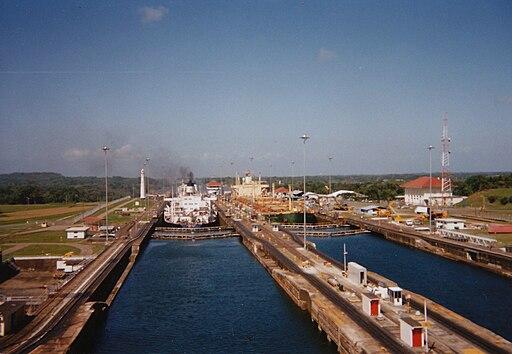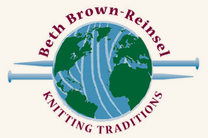
Today I am dreaming of the cruise I will be taking next year, from November 17-Dec. 4, 2025. When I passed through the Canal in 2002, it was as it had always been since 1914: two lanes wide. Since then, the Canal has undergone an expansion project, completed in 2016, adding more locks! The man-made Lake Gatun delivers an average of 200,000,000 L (52,000,000 US gal) of fresh water for a single passing of a ship. The canal is threatened by low water levels during droughts and there have been concerns in recent years. Deforestation around the area, caused by the increased human population, has encouraged erosion, causing the lakes to fill up with dirt. The rise in temperatures from Climate Change has caused more evaporation than usual, yielding less water. In normal times, 36 ships can transit the canal, but in December 2023, only 22 ships could pass due to low water.

https://commons.wikimedia.org/wiki/File:Panama_Canal_locks_1994.jpg
The men you see below were Spanish laborers on the Panama Canal ca 1900, also noted as the Isthmian Canal.

This file is licensed under the Creative Commons Attribution 2.0 Generic license.
Attribution:
Otis Historical Archives of “National Museum of Health & Medicine” (OTIS Archive 1), CC BY 2.0, via Wikimedia Commons. This is an unusual hand-tinted lantern slide. From the William C. Gorgas lantern slide set of the Registry of Noteworthy Research in Pathology.
Who Can Finish the Canal?
This canal has a long history, being considered as early as the 1500s. Several countries tried and failed to complete the project. The work became serious when France, who had colonized nearby countries, began the enormous task of removing huge amounts of dirt and planning for dams to be built. They worked on the project from 1881 to 1899 before giving up. The largest man-made lake on earth in its time, Gatun Lake, was created to feed the canal locks, raising and lowering the ships. The Americans took over the project in 1904 and completed it in 1914.
You can imagine the political issues that were created during the construction and afterward. Everybody wanted control of this new waterway. Each group that took over when the previous country ran out of money, found they had many problems. Because of the climate there, mosquitos abounded, infecting the people with Malaria and Yellow Fever! 22,000 men died before the Americans finally came in to finish the job. And about 5,600 more died after the Americans came. They had to figure out how to avoid the mosquitoes. It was a huge job to tackle in itself, building new and nicer rooming homes, sanitation, installing mosquito netting everywhere, and spraying oil on still water to kill larvae. The US bought all the old machinery from France, most of which had rusted away, and new and bigger machines were brought in on the newly built railroad.
Once the Canal was opened, Chilean harbors, the sheep industry of Patagonia, and the economy of the Falkland Islands were adversely affected as the maritime traffic significantly altered, reducing ship passage to those areas.
Tolls
The average toll for passage has been around US$54,000, although the most expensive toll paid so far is US$375,600 for the cruise ship the. These fees are based on empty and occupied passenger staterooms or tonnage of cargo. The smallest amount of a toll collected was 36 cents in 1928 by Richard HNorwegian Pearlalliburton, who swam the length of the Canal. This is equivalent to a bit over US$6 in 2023 dollars.
Ownership
In 1903, an agreement was signed between the US and Panama that allowed the US to build and indefinitely administer control of the Canal and its defenses. Columbia objected but finally agreed to recognize Panama as a sovereign country. In 1977, President Jimmy Carter signed a treaty with Panama which began a transition of free control to the Panamaninas as long as they guaranteed a treaty of permanent neutrality of the canal. In 1999, the Panamanians took over full control and established the Panama Canal Authority (PCA) which manages and controls it. The canal remains one the largest sources of income to the Panama economy.
A ship captain never gives over control of his ship–except in the Panama Canal. At the approach to the canal, a Panamanian captain will board the ship and steer it through the locks, then return control to the ship’s captain. It is an interesting and exciting ride that takes several hours. Watching all the people who work the canal gives one an appreciation for the building and maintenance needed for this important waterway.







